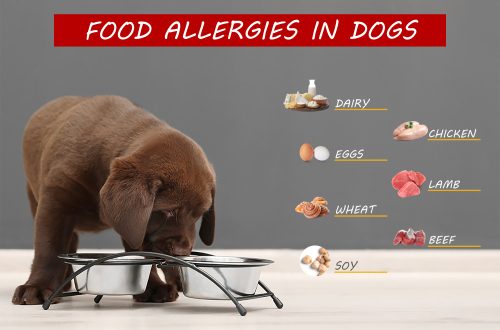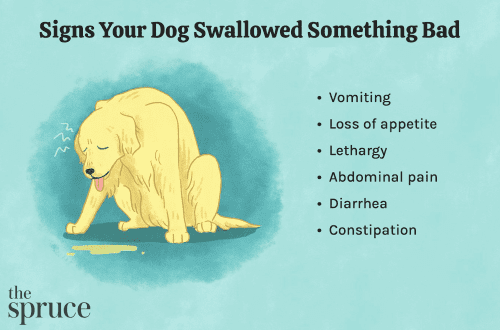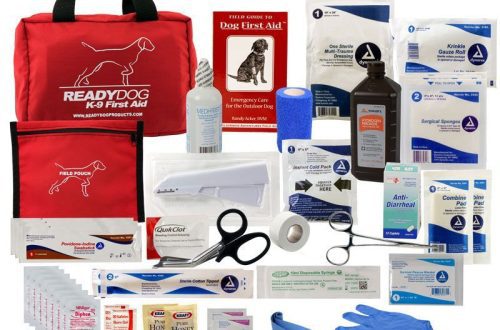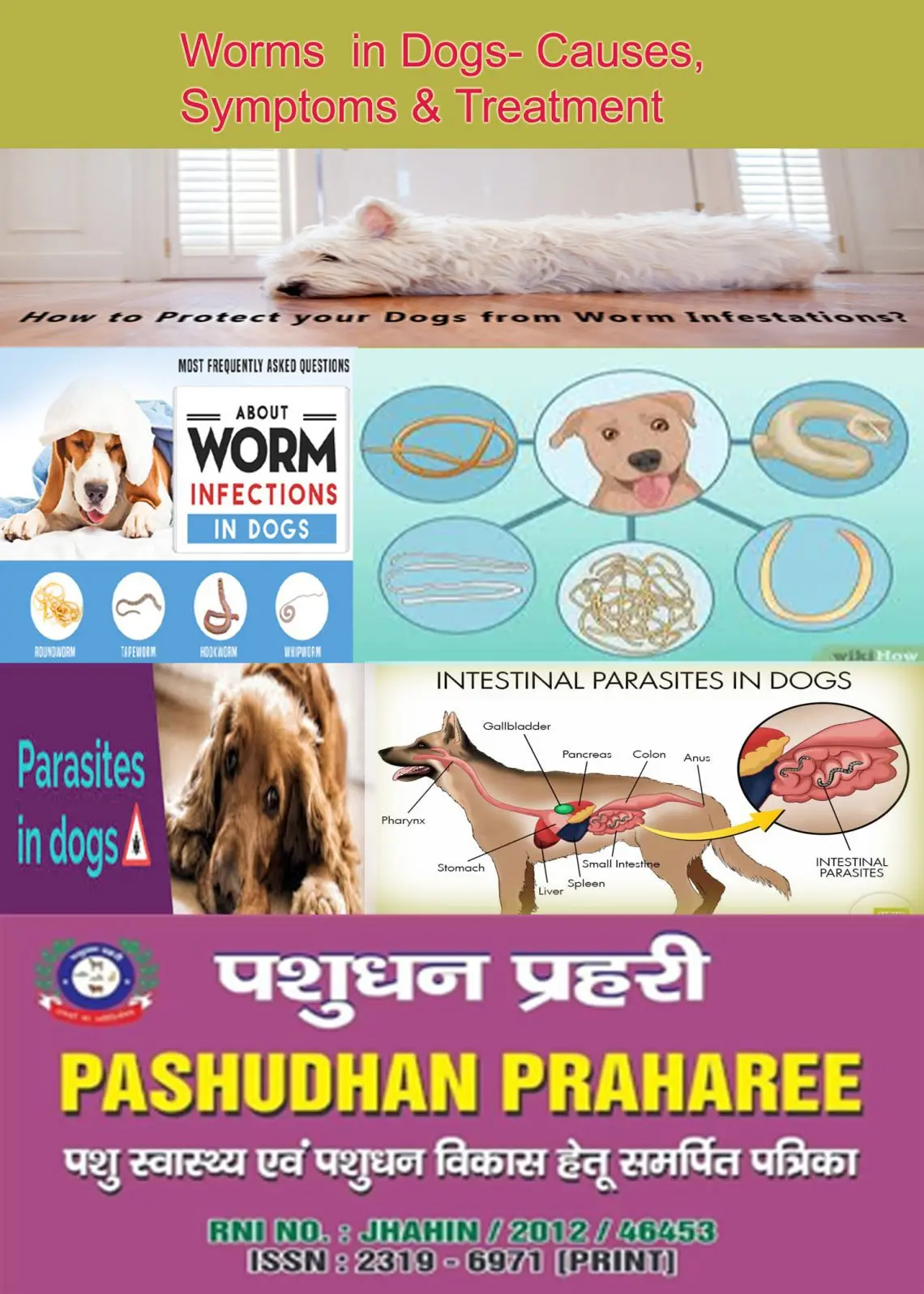
Worms in dogs: symptoms and treatment
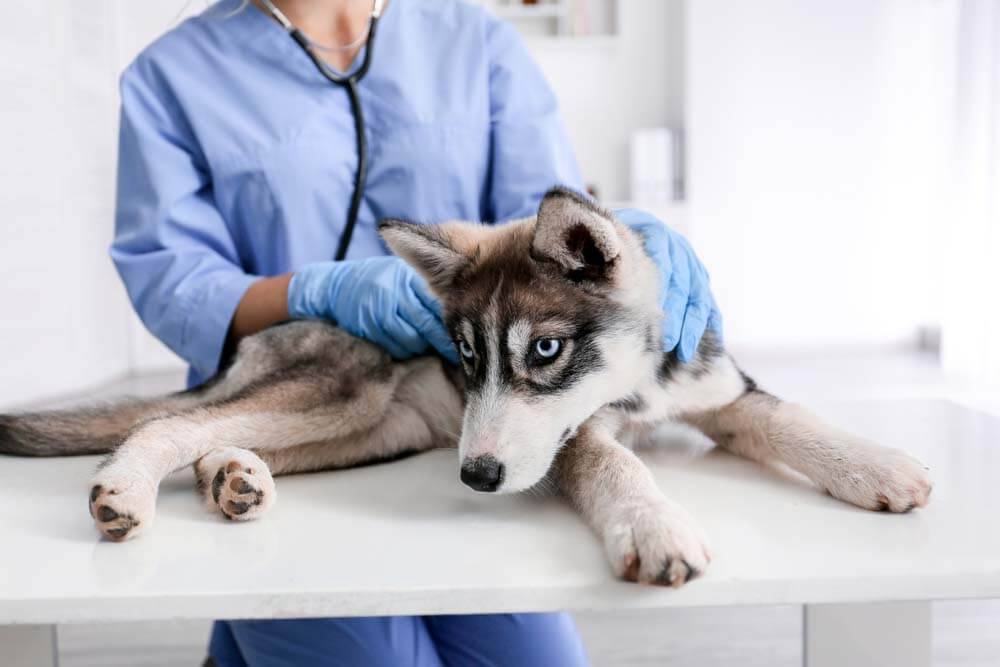
Contents
- Types of worms in dogs and what they look like
- How do dogs become infected with helminths?
- Sources of infection
- Symptoms and signs of worms in dogs
- Diagnostics
- How and how to treat worms in dogs?
- Worms in puppies
- Prevention of worms in dogs
- Is it possible to get worms from a dog to a person?
- Helminths in dogs: summary
- Answers to frequently asked questions
Types of worms in dogs and what they look like
There are two categories of canine worms that can infect your pet:
Intestinal – parasites that multiply and live in the intestines;
Extraintestinal are parasites that can live in the heart, eyes, lungs, or under the skin.
It is easy to get infected with worms. They are passed from mother to child in the womb or through mother’s milk. Worms can also be transmitted by swallowing feces, biting insects, or eating contaminated food or other infected animals. Some helminthiases in dogs can be identified by examining the feces.
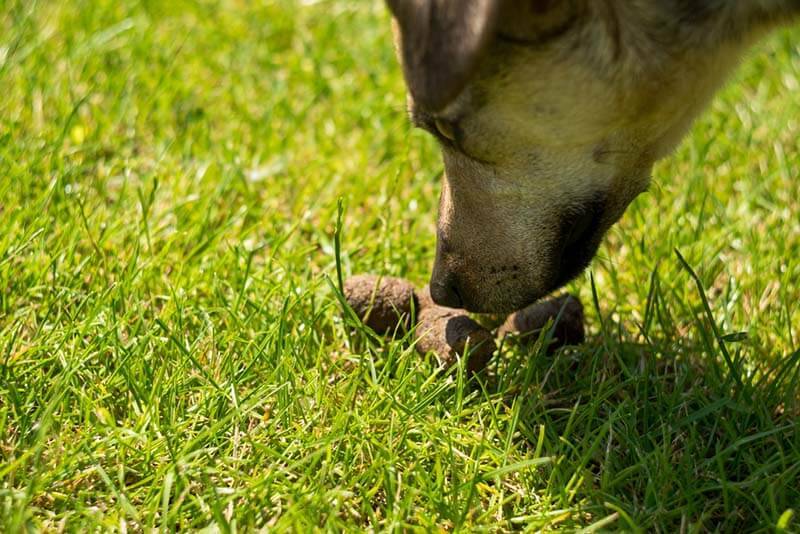
Worms vary in size and how they affect your pet.
Let us consider in more detail what types of helminths in dogs can be found.
Nematodes in dogs
Nematodes are infections caused by roundworms in dogs.
Nematodes in dogs look like small spindle-shaped parasites, ranging in length from 1 mm to several centimeters.
Name | Disease | Method of infection | Where are |
Toxocara and Ascarida | Toxocariasis and ascariasis | Eggs excreted by infected individuals remain in the environment for 15 days and are ingested by the animal. A larva comes out of them, penetrates into the intestinal mucosa and is transferred through the blood vessels to the liver, then to the heart and lungs. From the bronchi with mucus enters the oral cavity and is swallowed by the animal, getting back into the intestines, where it multiplies | In the intestines |
hookworms | Hookworm | The eggs are excreted in the feces, they hatch into a larva, which enters the body of the animal by ingestion or through the skin. If in the first case, the larvae, having entered the intestine with food, develop rapidly and reach sexual maturity, then in the second case, they migrate with blood to the heart, then to the lungs, bronchioles, bronchi and trachea, cough up and again enter the intestine. | In the small intestine |
Vlasoglavy | trichocephalosis | Eggs come out with feces and mature in the soil for several days. After they are swallowed by a dog, they begin to develop in the intestinal mucosa. Having gained a little strength, they migrate back to the intestinal cavity. | In the small intestine |
Dirofilaria | Dirofilariasis cardiac or subcutaneous | The intermediate host is a mosquito. He swallows an egg from the soil, a larva comes out in his abdomen and, when bitten, it enters the dog’s body. Further, depending on the type of parasite, the worm migrates under the skin or into the heart; during the migration period, it can also be seen in other organs – for example, in the eyes | Subcutaneous tissue, mammary glands, eye conjunctiva, mucous membranes, heart |
Trichinella | Trichinellosis | In the intestines, the worm lays eggs, and they are carried throughout the body with the bloodstream. Once in the muscles, they are fixed and wait until the next host eats them. In order to become infected, you must eat infected meat. | Larvae parasitize in the muscles, adults – in the intestines. |
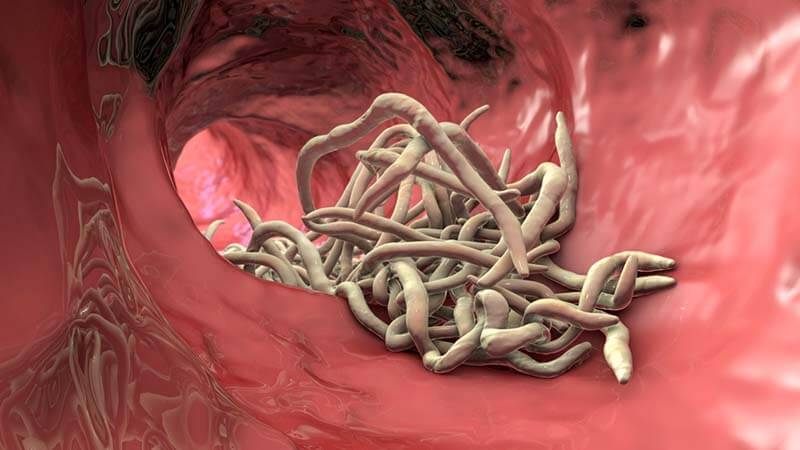
Cestodes – tapeworms in dogs
These are long worms in a dog that look like noodles. They are called tapeworms or flatworms. They belong to the group of cestodes and can grow up to several meters in length.
Name | Disease | Method of infection | Where are |
Diphyllobotryi | Diphyllobothriasis | Eggs with dog feces are released into the external environment. When they fall into the water, cilia-covered larvae emerge from them, which are swallowed by cyclops crustaceans, and they grow in them. Fish, swallowing infected crustaceans, become additional hosts of the parasite, the larvae penetrate the muscles, body cavity, liver and ovaries, where they turn into flat larvae and wait until the dog eats the fish | In the intestines |
Dipylydia | Dipylidiosis | Segments (ripe segments) of the helminth with eggs come out with feces. They are swallowed by a flea or louse, and a larva appears in its abdomen. Then the flea grows and bites the dog, if the dog manages to catch and chew it, the larva enters the intestines of the animal, attaches itself and begins to grow. | In the small intestine |
Echinococci | Echinococcosis | Helminth eggs come out with feces, and then they can be swallowed by a rodent, a sheep, a cow. Also the dog itself. If the intermediate host swallows, the larva forms a ball with liquid on the internal organs and, if it is lucky, and the affected organ is fed to the dog, it will enter the intestines, where it can grow and begin to multiply. | Adult helminth – in the intestine, larvae – in any organ, in cysts |
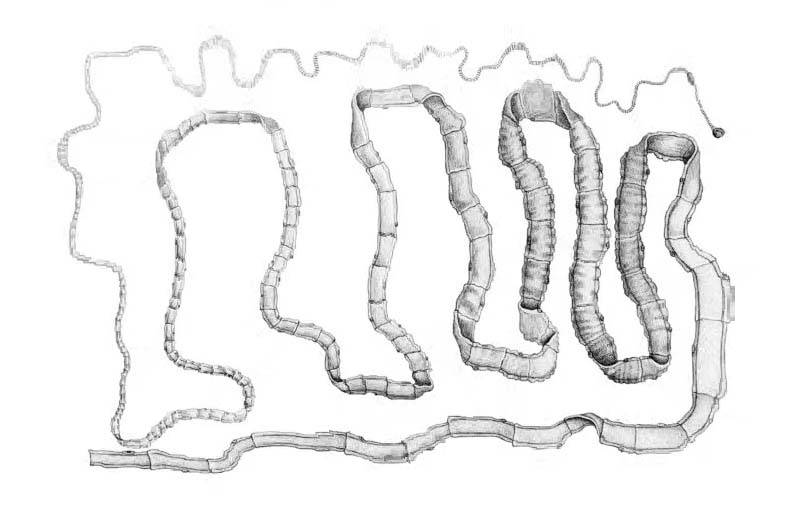
Trematodes in dogs
These are helminths in dogs related to flukes. Their distinguishing feature is a small flat leaf-shaped body and a large sucker on the head. The size of the parasite can be from 0,1 mm to 10 cm. Most often there are two suckers – head and abdominal. With them, the parasite sticks to the wall of the organ.
Name | Disease | Method of infection | Where are |
opisthorchia | Opisthorchiasis | Infection occurs when mammals eat raw fish. The larva enters the stomach and makes its way to the pancreas and liver ducts. | Bile ducts of the liver or pancreas |
Fasciola | Fascioliasis | Bile ducts of the liver | |
Alaria | Alariasis | Eggs come out with feces, they are swallowed by mollusks. They hatch into larvae and grow. Having reached a certain age, the larvae come out and are swallowed by frogs. An infected frog is eaten by a dog, and a parasite begins to grow in its intestines | Intestines |

How do dogs become infected with helminths?
Pets can become infected with worms when they ingest eggs or larvae found in feces or soil. They can also get infected from fleas they chew on their own fur. After the larva hatches and attaches to the intestinal wall, where it can grow into an adult.
Another way a dog can become infected is through the transmission of parasites from mother to puppy. Worms may migrate through the placenta during pregnancy, or the larvae may be ingested by puppies while breastfeeding.
Also, infection with helminths in dogs can occur when eating an intermediate host – a flea, mosquito, frog, rodent.
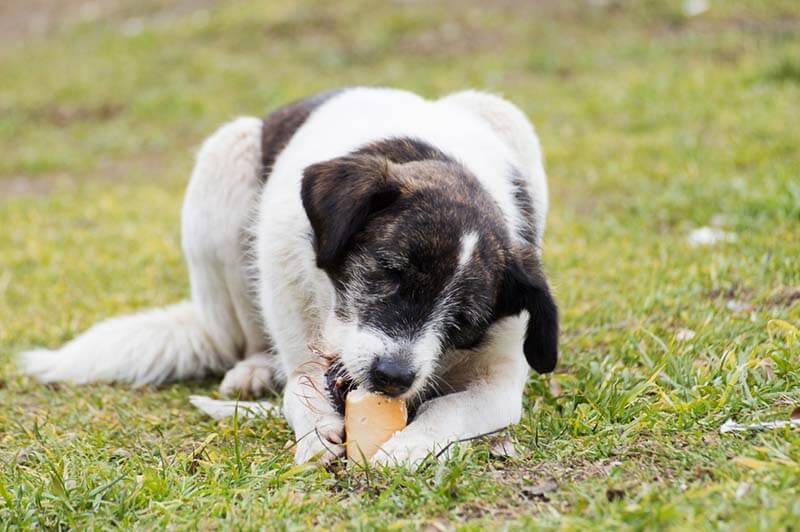
Sources of infection
Some intestinal parasites are transmitted from one dog to another by what is known as fecal-oral transmission. Worm eggs are laid by an infected animal through the feces and enter the intestinal tract of another pet through the mouth. Even though you may not even see the eggs or feces, there may be some in the grass, waiting for your dog to pass by. She will lick her paws and swallow the eggs, which will hatch and start growing.
Tape parasites are transmitted to dogs through an accidentally swallowed flea.
Worm eggs in dogs can also remain on the coat, and the pet itself will become a source of infection.
Another carrier of parasites is blood-sucking insects. Mosquitoes can carry Dirofilaria larvae.
Infected fish, mice, frogs can also be a source of helminthic invasion.
Based on this, it is clear that the most susceptible to infection are dogs that pick up something on the street, eat feces or drink from puddles, hunt rodents and frogs, and are not treated for external parasites and mosquitoes.
Heat and moisture are the most favorable factors for the development of helminths. Therefore, there is a high probability of infection with worms in the tropics, and in Russia – in warm areas.
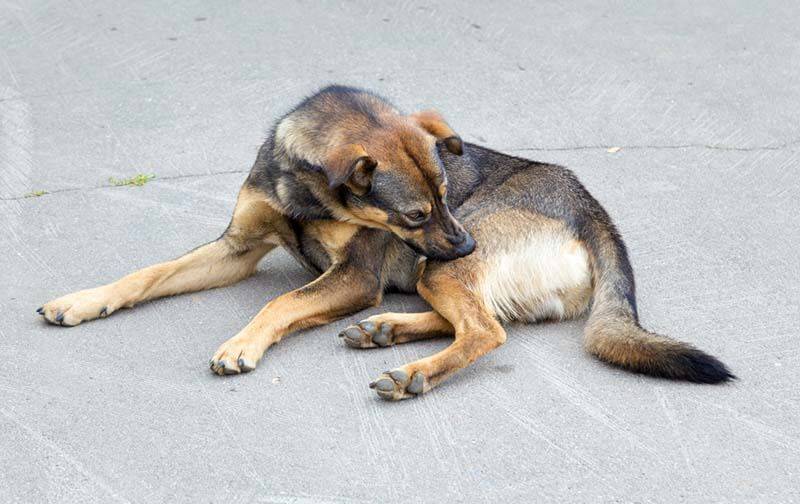
Symptoms and signs of worms in dogs
Let us analyze in detail what symptoms will indicate the presence of helminthic invasion in dogs.
One of the most common symptoms in pets is coughIt is often a symptom of heartworms, but can also be a symptom of hookworms and roundworms.
Animals with heartworms will have a dry and persistent cough, unlike a normal cough, it will be strong and infrequent. At an early stage in the development of heartworms, the animal may cough after exercise. This is due to the fact that the parasites migrate to the lungs, thereby creating a barrier to oxygen saturation of the blood. Patients with roundworms will begin to cough as the larvae migrate to the lungs. As for dogs with hookworms, coughing will only be a symptom if there are many parasites and the disease is progressing.
If your dog is coughing, it is important to contact your veterinarian immediately. Many cases of deworming in dogs can be very serious and sometimes even fatal.
If the animal has vomiting, this can also be a symptom of helminthic invasion. It is known that any type of worm can cause vomiting. Pets with flukes may vomit with a yellow-green substance, while dogs with round or ribbon parasites, hookworms may vomit with visible worms.
Keep in mind that vomiting can also be caused by other health problems, such as indigestion.
Soft stools and diarrhea can be the result of worm infestation.
Prolonged diarrhea leads to dehydration, so it is very important to visit the veterinarian immediately.
In addition to diarrhea, dogs with hookworms may have blood in their stools. Bloody diarrhea develops as the infection worsens and can cause chronic bloody diarrhea if left untreated.
Sluggish and less activethan usual, dogs can be infested with parasites. Worms cause this lack of energy by taking blood and nutrients from the body.
Hookworm is a common parasite that is dangerous enough to cause severe anemia in puppies.
Another common symptom of infection in dogs is bulging or bloated appearance. Roundworms most commonly cause this symptom.
The pot-bellied look is commonly seen in puppies that have been infected with worms from their mother.
Puppies are not the only ones who develop this symptom. Adult dogs can also have a pot-bellied appearance.
If you notice a sudden change in appetite your pet may have been infected with roundworms. Dogs often lose their appetite or, in some cases, have a sudden increase in hunger.
At the same time, despite the fact that the dog has an increased level of appetite, it still loses weight.
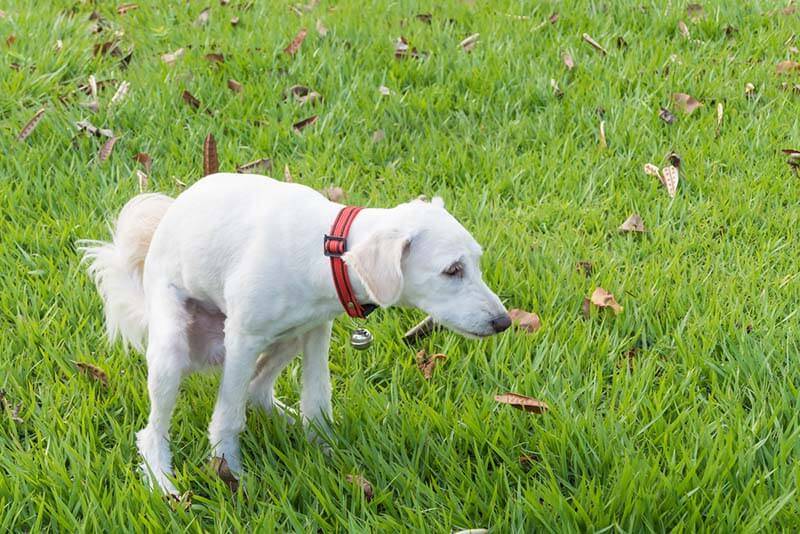
If your dog is showing signs rapid weight loss, she may have a tape parasite or whipworm. This is due to the fact that the parasites feed on the nutrients in the stomach. As mentioned earlier, weight loss can occur even if your dog’s appetite is normal or increased.
A healthy pet should have a shiny thick coat. If a wool begins to fade and dry out, it is worth checking the animal for the presence of helminths. Hair loss or the appearance of rashes can also be a symptom of worms.
Dogs that exhibit signs of skin irritationmay be heavily infested with parasites. Such inflammation may include a rash and severe itching.
This brings us to the next symptom of worms in dogs − anus itching. Often it can be caused by problems with the anal glands, but animals with worms sometimes rub their bottom on the floor to get rid of itching in this place. In addition, your dog may bite or lick the area under the tail.
Some worms, such as tapeworms, may appear as small moving segments in wool or the area around the anus. Roundworms are often seen in stool.. They will most likely look like grains of rice or, if dry, they will look like hard yellow specks.
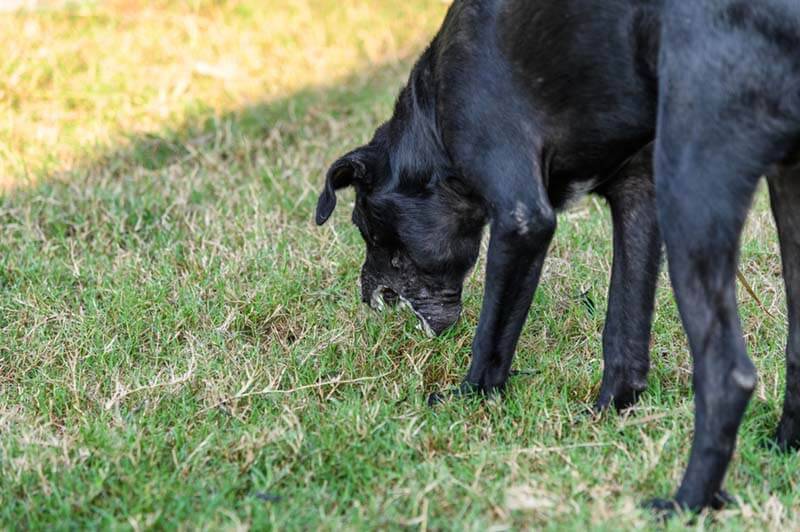
Localization
Depending on the breeding site of dog worms, the symptoms and disturbances in the body will differ.
Localization | Diseases caused | Symptoms |
Intestines | Gastroenterocolitis | Diarrhea, weight loss, perverse appetite, change in coat quality, pale mucous membranes, intestinal perforation |
Liver | Cholecystitis, hepatosis | Enlargement of the liver in size, inflammation of the gallbladder, lethargy, jaundice, ascites, anemia |
Pancreas | pancreatitis | Vomiting, food refusal, pancreatic necrosis |
Heart | Chronic congestive right-sided heart failure, myocarditis | Cough, subcutaneous or limb swelling, fever, fatigue |
Subcutaneous tissue | Allergy, urticaria | Itching, swelling, hair loss, visible traces of parasite migration under the skin, on the skin, painful swelling, fever |
Bronchi | Bronchitis pneumonia | Cough |
Diagnostics
If your dog catches a tape parasite, you may see grains resembling grains of rice in his stool. Heartworms are more difficult to diagnose until the disease is more advanced.
If you suspect your pet is suffering from intestinal worms, the first step should be to collect a stool sample as instructed by your veterinarian to determine the type of parasite.
Indirect signs of helminthic invasion in dogs can be seen in a clinical blood test – anemia, an increase in eosinophils.
Sometimes helminths can be seen on ultrasound – in the heart or in the intestines.
Unfortunately, there is no perfect study for determining the presence of worms, and, most often, we learn about the presence of them in the body when they appear themselves – in feces, vomit, on wool or during ultrasound.
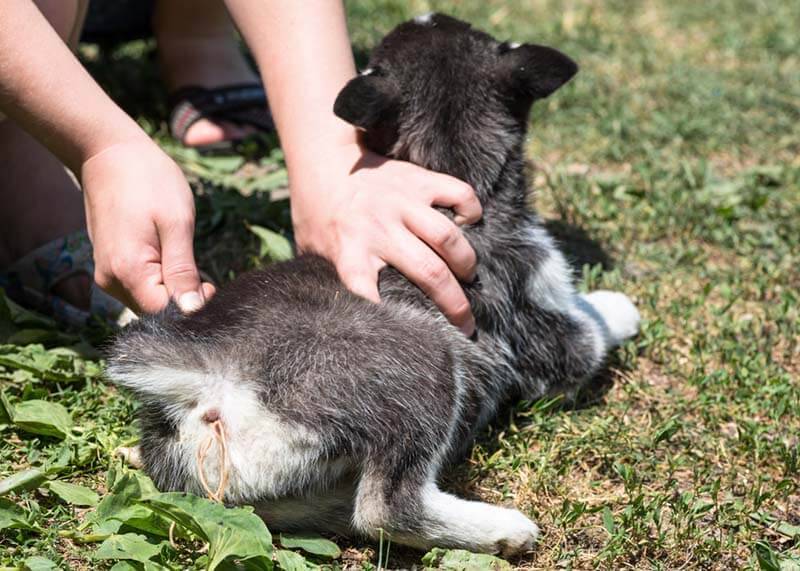
How and how to treat worms in dogs?
To get rid of roundworms and hookworms, you will most likely have to give your animal an oral medication called Pirantel and Fenbendazole. It is necessary to check for re-infection every 3-6 months for a certain period of time after the start of treatment.
Pyrantel is safe enough to give to puppies from 4 weeks of age.
Praziquantel-based drugs are commonly used to treat tapeworms.
Flukes can only be killed with fenbendazole or febantel. This treatment will last for five days and will need to be repeated after three weeks.
Treating worms in dogs is not an easy task. It is important to strictly observe the dose of the drug and the frequency of administration. The treatment regimen is prescribed by a veterinarian, depending on the type of parasite, the condition of the dog and the conditions of its maintenance.
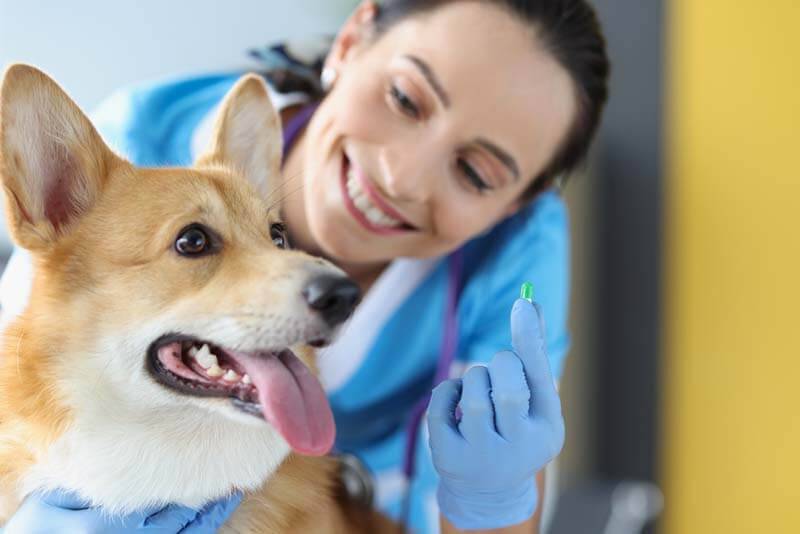
Worms in puppies
Symptoms and signs of worms in a puppy are usually more pronounced than in an adult dog.
Many puppies become infected before birth and despite deworming efforts by breeders and shelters, they become infected when they arrive home with their new families. It is important that every family that acquires a new puppy is aware of the dangers of intestinal parasites and immediately begins monitoring and prevention with a trip to the veterinarian.
Worms in a puppy’s stool can look different depending on the type of worm. Many puppies are born with roundworm larvae in their tissues. Eggs are transferred from the mother’s tissues to the puppy (on the 42nd day of pregnancy), or when the puppy drinks milk from the mother. If the eggs hatch in the intestine, they release larvae that penetrate the intestinal wall and then migrate. The life cycle is completed when the larvae are coughed up by the puppy and then swallowed again. Eventually, the worms begin to release larvae and can be found in the stool. If ingested, they can re-infect a puppy or other pets.
Roundworm eggs have a hard shell that allows them to live for many years in the environment.

Tapeworms are transmitted to puppies by fleas. When they ingest a flea, the tapeworm can develop in the small intestine. These parasites rarely cause symptoms. This can cause irritation around the anus, causing the dog to rub it against the floor.
Worms, roundworms, hookworms, and coccidia protozoa (a subclass of single-celled parasites) are dangerous to the puppy. Symptoms of a puppy infection include:
Malnutrition
Weight loss
bad wool
Loose stools or diarrhea
Anemia
Round belly
Pneumonia (in severe cases)
Vomiting.
Some puppies may be infected but show no symptoms. The eggs of the worms remain dormant and then become active when the animal is under stress. If the mother has hookworms or roundworms, they can become active late in pregnancy and then infect the puppy.
Treatment for worms in puppies depends on the type of worm. Roundworms are started at 2 weeks of age, then every 14 days until 2 weeks after weaning with fenbendazole/febantel, pyrantel. Then monthly anthelmintic until the age of six months. Tapeworms should be treated after the presence of fleas is established. Treatment is with praziquantel along with flea or lice control.

Prevention of worms in dogs
Worms in dogs are much easier to prevent than to treat.
For preventive purposes, it is recommended to donate feces for helminth eggs at least once a year. As a rule, in the spring, feces are collected in a special solution and examined in the laboratory for the presence of helminth eggs.
Tapeworm infections are most often caused by pets eating fleas. Therefore, keeping your dog free of these nasty insects is the best way to avoid infection.
There are several topical and oral flea prevention products that are effective in killing fleas and therefore controlling tapeworm infestations. Treatments can be carried out with drops on the withers – Advantix, Inspector, Stronghold and others, with tablets inside – Bravecto, Simparica, Neksgard and collars from different companies.
Hookworms and whipworms are usually transmitted through feces. Clean up your dog’s feces regularly and keep him away from grass and other dog feces.
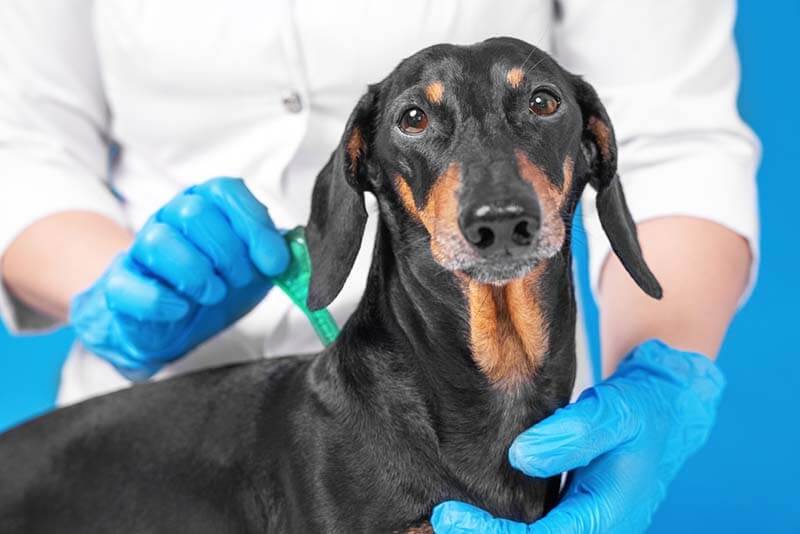
Starting from 2 months, regularly carry out the treatment of helminths. Dog worming is carried out once a quarter, choosing a tablet according to the weight of the dog. There is a wide choice of anthelmintics on the market for veterinary drugs, and it is recommended to change them periodically, rather than taking the same one throughout life. Preparations for deworming – Canikquantel, Endogard, Milbemax, Praziquantel, Poliverkan, Drontal, Cestal and others. Before each use of such products, read the instructions and doses.
Preventing heartworm is safer and cheaper than treating it, so prevention drugs are given to puppies as early as 8 weeks of age. Many of the heartworm preventatives are also effective against intestinal parasites. The most common heartworm preventive drugs are available in both oral and topical forms. It is recommended to apply them monthly during the period of activity of flying insects.
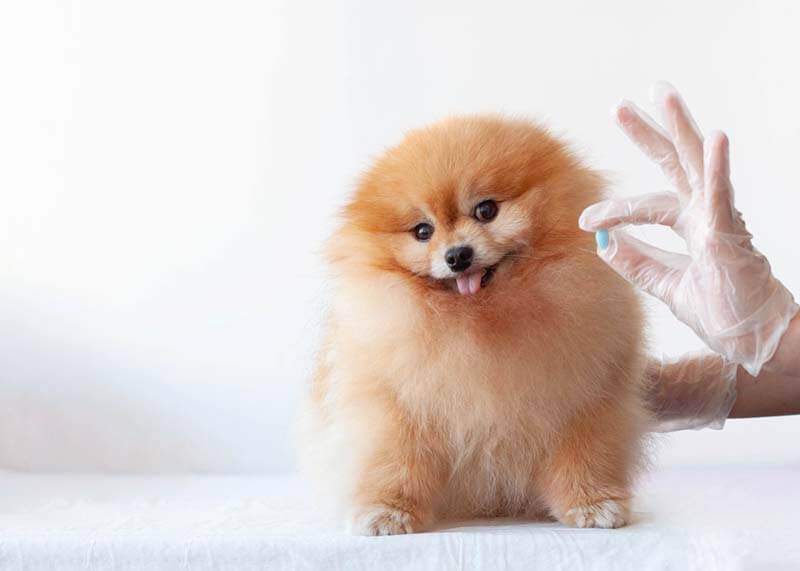
Is it possible to get worms from a dog to a person?
Worms are transmitted from a dog to a person through very close contact and non-compliance with personal hygiene measures. However, it is worth remembering that dog parasites are not happy to be in a person and get into it by accident. Some of them die, others freeze and wait for the moment to leave the human body.
In order not to become infected with helminths, it is enough to follow simple rules of hygiene. Always wash your hands after handling a dog or its feces, do not kiss or let your pet lick your face, and do not sleep with an animal in your bed. Instruct the children on how to follow these basic hygiene practices. Young children and infants are best isolated from the dog altogether until the parasite treatment is done.
If gardening, wear gloves and shoes as a precaution. There should be no open cuts or scratches on the skin.
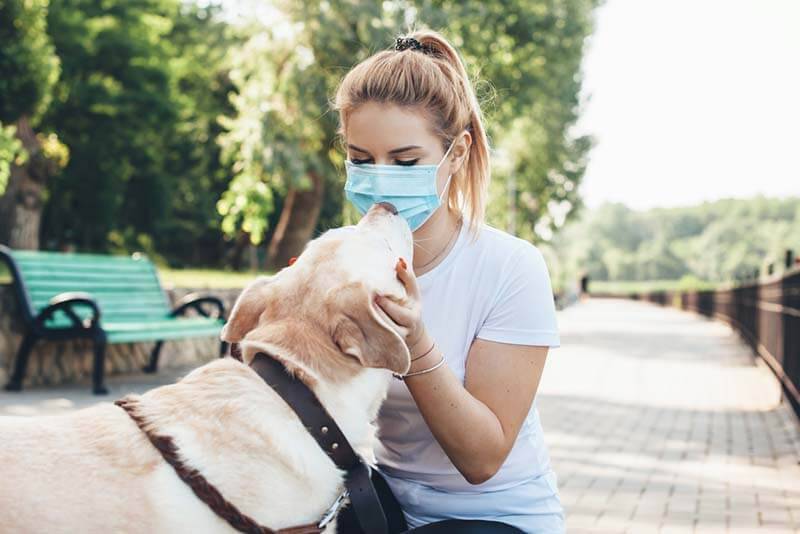
Helminths in dogs: summary
Worms are a serious deviation in the state of health.
Symptoms of helminthic invasion will depend on the type of parasites and their number in the body. The most common are weight loss, perverted appetite, vomiting, diarrhea and poor coat quality.
Most worms, including roundworms, tapeworms, hookworms, and whipworms, live in the intestines.
There are many safe ways to deworm your dog – pills, suspensions, drops on the withers. The sooner the worms disappear, the sooner your pet will be healthy and feel better.
The best way to protect your pet is to control pests that carry parasites, including fleas and mosquitoes, and keep your home and yard clean.
Answers to frequently asked questions
Sources:
Ruth McPith, DVM. Intestinal parasites in dogs http://www.pethealthnetwork.com/dog-health/dog-diseases-conditions-az/intestinal-parasites-dogs.
Dubina, I.N. Guidelines for the diagnosis of carnivorous helminthiases: approved. GUV MCHI RB, 2008.
Yatusevich, A.I. Veterinary and medical parasitology: (Encyclopedic reference book), 2001.





